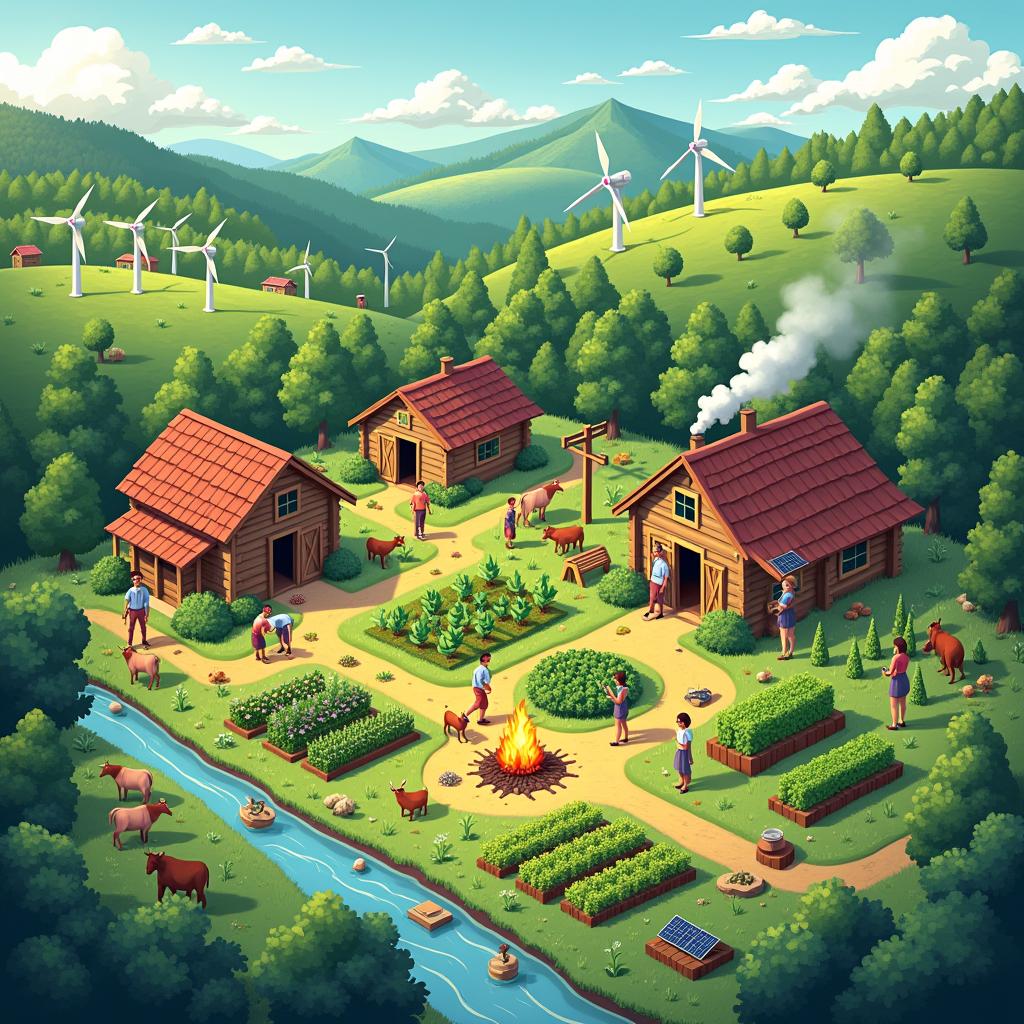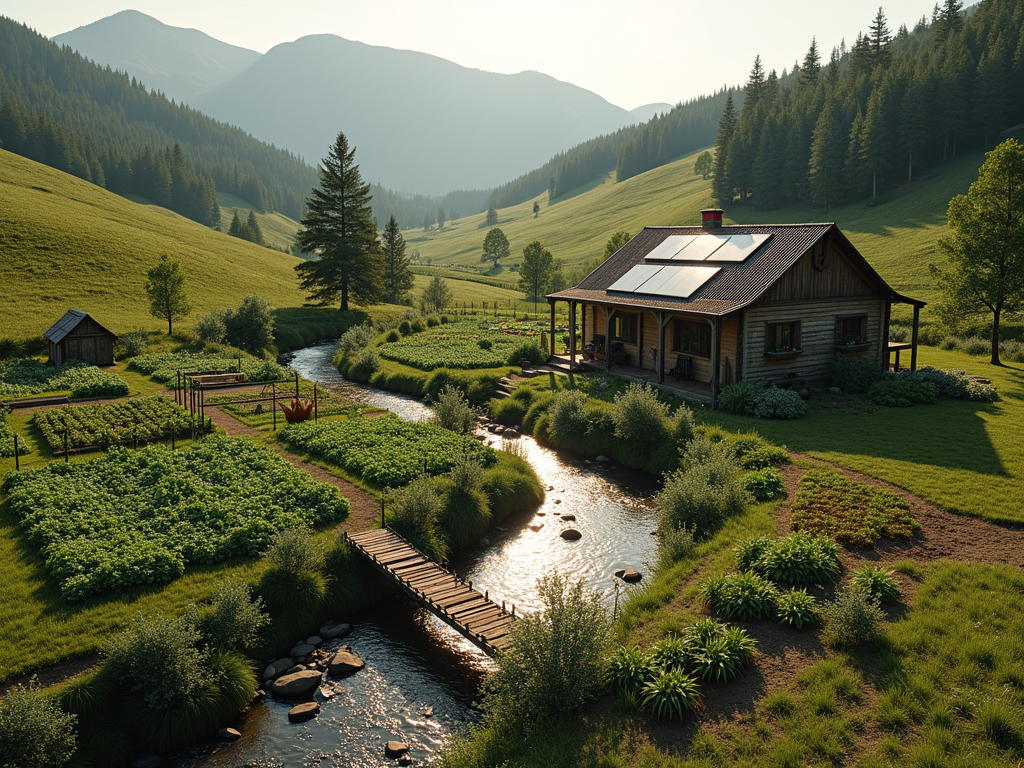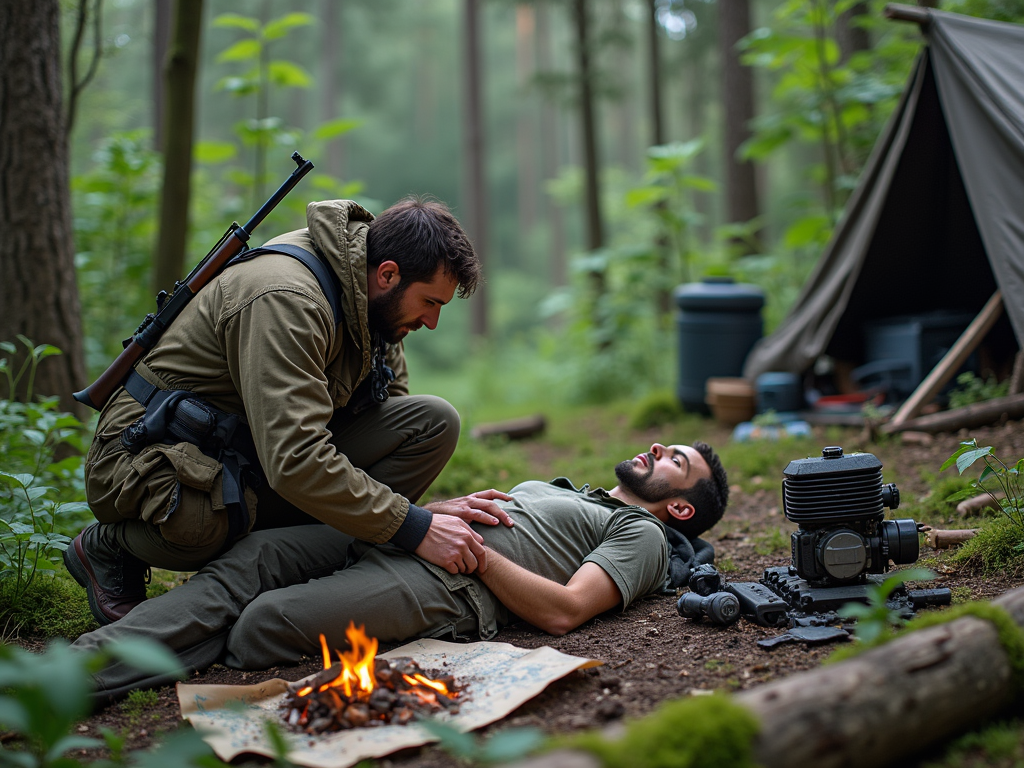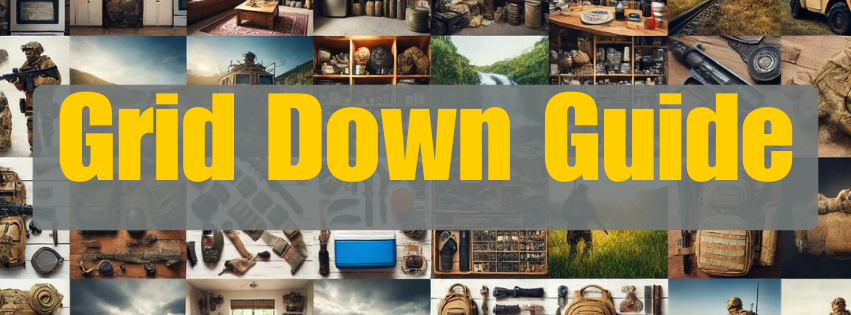
Planning a successful homestead or survival community starts with securing essential resources and building reliable systems. My focus remains on critical elements like water availability, fertile soil, and proper legal frameworks while creating sustainable infrastructure and food sources. Building relationships with neighbors who share similar goals strengthens the foundation for long-term stability.
Key Takeaways
- Choose a location with reliable water sources (minimum 5 gallons per minute for wells) and favorable soil conditions (pH 6.0-7.0) for agriculture.
- Establish essential infrastructure including power generation, water systems, and waste management while considering passive solar design.
- Focus on high-yield, storable crops and integrate small livestock for sustainable food production.
- Develop core survival skills including first aid, mechanical repairs, and food preservation techniques.
- Build strong community networks through skill-sharing, resource management, and clear communication protocols.
Securing Your Perfect Homestead Location: A Complete Assessment Guide
Finding the right homestead location needs careful planning to create a sustainable survival retreat that’ll serve you well. I’ve found that rural areas offer the best balance of space and privacy while staying within reach of essential supplies.
Essential Resource Assessment
Water access should be your top priority. I recommend testing all available water sources before purchase – whether they’re springs, streams, or wells. For wells, you’ll need at least 5 gallons per minute to support a small homestead. Having multiple water sources adds security, and you can supplement with a backup rainwater collection system.
Soil testing is crucial for anyone planning to start a survival garden. I’ve learned that soil with a pH between 6.0-7.0 provides the best growing conditions for most crops. Getting professional soil analysis can save years of frustration and amendment costs.
Legal and Environmental Considerations
Here’s what you need to check before making a purchase:
- Local zoning laws and building codes
- Water rights and restrictions
- Annual property tax rates
- Deed restrictions or homeowners association rules
- Mineral rights ownership
- Access rights and easements
The land type significantly impacts your options and budget. Forested land typically costs less but requires clearing for agriculture. Meanwhile, existing farmland commands premium prices but offers immediate growing potential.
Don’t overlook sunlight exposure – it’s vital for both growing food and potential solar power installation. I suggest tracking sun patterns across your prospective property throughout different times of day. South-facing slopes in the Northern hemisphere provide optimal sunlight.
The perfect location also depends on creating connections with like-minded neighbors. Building a strong survival network can multiply your chances of long-term success. Look for areas where small-scale farming and self-reliance are already common.
Topography plays a major role in your homestead’s success. Gentle slopes (5-15%) provide natural drainage while still allowing for building and gardening. Steep terrain can limit usable space but might offer strategic advantages for security.

Creating Your Self-Sufficient Infrastructure
Putting together your homestead infrastructure doesn’t have to break the bank. Earth-sheltered homes can cost $40-150 per square foot, while basic cabins run $100-300 per square foot. For those seeking a simpler start, yurts offer a budget-friendly option at $15-30 per square foot.
Essential Systems for Self-Reliance
Power generation starts with calculating your daily usage – I recommend tracking current consumption for a month to get accurate figures. A basic solar setup with 5kW capacity costs $15,000-20,000 installed, while small wind turbines range from $3,000-8,000 for a 1-2kW system.
Clean water access is crucial for any homestead. I’ve found that setting up rainwater collection systems provides an excellent primary or backup water source. A 1,500-gallon system typically costs $3,000-5,000. For filtration, Berkey systems handle 3,000 gallons per filter set, while Sawyer filters process up to 100,000 gallons.
Waste management requires careful planning. Here’s what I suggest considering:
- Composting toilets: $1,000-2,000 for quality units
- Basic septic system: $3,000-7,000 installed
- Greywater recycling: $500-2,000 for simple systems
Security doesn’t need complex technology. A combination of physical barriers works best:
- 6-foot chain-link fencing: $15-25 per linear foot
- Natural thorny hedges: $10-30 per plant
- Basic alarm systems: $200-500 for DIY setups
For food storage, a root cellar maintains temperatures between 32-40°F year-round. A 10×10 built-in cellar costs $3,000-6,000. I suggest planning your garden space near storage areas for efficiency.
Passive solar design can cut heating and cooling costs by 50%. South-facing windows with proper overhangs and thermal mass materials like concrete or stone floors help regulate temperature naturally. For every 1,000 square feet, plan for about 100,000 BTUs of heating capacity in cold climates.
Creating a resilient homestead takes time, but starting with these core systems builds a solid foundation. Remember to factor in regular maintenance costs and develop contingency plans for system failures.
Establishing Your Food Production System
Garden Planning and Crop Selection
The foundation of a self-sufficient homestead starts with smart garden planning. I’ve found that companion planting maximizes space while naturally deterring pests – like pairing tomatoes with basil or corn with pole beans. My first step is always calculating my family’s daily caloric needs, which helps determine the necessary garden size and crop varieties.
Creating a sustainable survival garden means focusing on high-yield, storable crops. I prioritize calorie-dense plants like potatoes (about 350 calories per pound), dry beans (1,500 calories per pound), and winter squash (around 100 calories per pound). These staples can feed a family throughout the year with proper storage.
Livestock Integration and Food Preservation
Small livestock adds valuable protein to a homestead’s food production. I’ve learned that chickens need about 4 square feet per bird in their coop, while meat rabbits require 4-6 square feet per cage. Goats can provide milk and meat but need at least 200 square feet per animal for grazing.
Food preservation becomes crucial for year-round sustenance. I use multiple methods:
- Water bath canning for high-acid foods like tomatoes and fruits
- Pressure canning for low-acid foods and meats
- Dehydrating for herbs, fruits, and vegetables
- Fermentation for vegetables and dairy products
Building a comprehensive seed bank ensures long-term sustainability. I save seeds from heirloom varieties each season, storing them in airtight containers in a cool, dry place. This practice reduces dependency on external seed sources and helps develop plants better adapted to my specific growing conditions.
For reliable water access, I’ve implemented a rainwater harvesting system that supports both garden irrigation and livestock needs. This setup includes filtration and storage components, making it a vital part of the overall food production system.
Storage conditions vary by preserved food type – I maintain my root cellar at 32-40°F with 85-95% humidity for root vegetables, while my pantry stays at 50-70°F with 60% humidity for canned and dried goods. These specific conditions help extend food shelf life significantly.
Building Core Survival Skills and Medical Knowledge
Essential Medical and First Aid Skills
Medical emergencies don’t wait for help to arrive, so I’ve made first aid training a top priority. Getting Red Cross First Aid/CPR/AED certification provides crucial life-saving skills that can make a real difference in critical situations. I’ve found that pairing modern medical knowledge with traditional herbal medicine creates a more complete approach to health care. This combination has helped me identify and use local medicinal plants while maintaining access to conventional first aid techniques.
Technical and Survival Expertise
Survival skills go far beyond just medical knowledge. I’ve discovered that hands-on experience with mechanical systems is invaluable for maintaining a self-sufficient homestead. Learning basic carpentry has allowed me to handle repairs and build necessary structures. Understanding plumbing helps me set up effective water collection systems and maintain them properly.
Here are the core skills I’ve focused on developing:
- Firearms handling and maintenance for protection and hunting
- Hand-to-hand combat techniques for personal defense
- Basic electrical work for power system maintenance
- Navigation using maps, compass, and natural indicators
- Water purification methods including filtration and boiling
- Fire starting using multiple techniques
- Engine repair and maintenance fundamentals
- Wild food identification and foraging practices
These skills support creating a complete survival strategy and help ensure self-reliance. I’ve learned that consistent practice is key – skills can get rusty without regular use. That’s why I set aside time each month to review and practice these abilities, especially the ones I don’t use daily. Many of these skills can be learned through local community college courses, workshops, or by partnering with experienced mentors in local survival groups.

Creating a Resilient Community Network
Building strong community bonds starts with connecting to my immediate neighbors. I’ve found that starting small conversations about emergency preparedness can open doors to deeper discussions about mutual support. Through creating a survival network, I can establish trusted relationships that become vital during challenging times.
Building Your Support System
Local connections form the backbone of a resilient community. I start by identifying neighbors with complementary skills and resources. A retired mechanic might maintain vehicles, while someone with medical training could handle first aid. These relationships shouldn’t feel forced – they should grow naturally through regular interaction and shared interests.
Here are key steps to strengthen community bonds:
- Host monthly preparedness meetings to share knowledge and plans
- Create a neighborhood skills inventory to identify gaps
- Set up regular training sessions for essential survival skills
- Establish clear communication protocols for emergencies
- Plan community events that build trust and familiarity
- Develop shared resource agreements
Communication and Resource Management
Reliable communication serves as the glue holding community networks together. I recommend setting up multiple systems – ham radio operations can connect with distant communities, while CB radios work well for local coordination. These tools become critical when traditional communication methods fail.
A successful community network needs clear systems for sharing and managing resources. I’ve seen how bartering arrangements can strengthen bonds between neighbors while ensuring everyone’s needs are met. For instance, I might trade my gardening expertise from my survival garden for someone else’s mechanical skills.
The key to maintaining harmony lies in establishing clear guidelines upfront. My community agreement includes:
- Written protocols for resource sharing
- Clear expectations for participation
- Methods for resolving conflicts
- Guidelines for accepting new members
- Emergency response procedures
- Regular review and updates of community rules
A strong community network extends beyond just survival planning. By incorporating family survival planning into the broader community strategy, I create a support system that benefits everyone. This might include sharing childcare responsibilities during emergencies or coordinating pet care through dedicated pet survival plans.
The strength of a community network lies in its ability to adapt and grow. Regular skill-sharing workshops keep knowledge fresh and help integrate new members. I might organize sessions on food preservation, basic medical care, or water collection techniques. These workshops build confidence while strengthening community bonds.
Resource management becomes simpler with clear systems in place. I use a simple inventory system to track shared tools and supplies, ensuring fair access for all members. This helps prevent misunderstandings and maintains transparency within the group.
By focusing on these fundamental aspects of community building, I create a network that’s ready to face challenges together. The goal isn’t just survival – it’s creating a thriving community that supports and strengthens each member.
Sources:
The Encyclopedia of Country Living, Carla Emery
Back to Basics: A Complete Guide to Traditional Skills, Abigail R. Gehring
When Technology Fails, Matthew Stein
The Prepper’s Pocket Guide, Bernie Carr
American Red Cross
Backwoods Home Magazine
